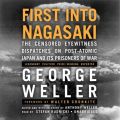 First into Nagasaki
First into Nagasaki
Автор: George Weller
Год издания:
 Hiroshima Traces
Hiroshima Traces
Автор: Lisa Yoneyama
Год издания:
Remembering Hiroshima, the city obliterated by the world's first nuclear attack, has been a complicated and intensely politicized process, as we learn from Lisa Yoneyama's sensitive investigation of the «dialectics of memory.» She explores unconventional texts and dimensions of culture involved in constituting Hiroshima memories—including history textbook controversies, discourses on the city's tourism and urban renewal projects, campaigns to preserve atomic ruins, survivors' testimonial practices, ethnic Koreans' narratives on Japanese colonialism, and the feminized discourse on peace—in order to illuminate the politics of knowledge about the past and present. In the way battles over memories have been expressed as material struggles over the cityscape itself, we see that not all share the dominant remembering of Hiroshima's disaster, with its particular sense of pastness, nostalgia, and modernity. The politics of remembering, in Yoneyama's analysis, is constituted by multiple and contradictory senses of time, space, and positionality, elements that have been profoundly conditioned by late capitalism and intensifying awareness of post-Cold War and postcolonial realities.<br /><br /><i>Hiroshima Traces</i>, besides clarifying the discourse surrounding this unforgotten catastrophe, reflects on questions that accompany any attempts to recover marginalized or silenced experiences. At a time when historical memories around the globe appear simultaneously threatening and in danger of obliteration, Yoneyama asks how acts of remembrance can serve the cause of knowledge without being co-opted and deprived of their unsettling, self-critical qualities.
 Peace Tree from Hiroshima
Peace Tree from Hiroshima
Автор: Sandra Moore K.
Год издания:
**Winner of the 2015 Gelett Burgess Award for Best Intercultural Book** **Winner of the 2015 Silver Evergreen Medal for World Peace** This true children's story is told by a little bonsai tree, called Miyajima, that lived with the same family in the Japanese city of Hiroshima for more than 300 years before being donated to the National Arboretum in Washington DC in 1976 as a gesture of friendship between America and Japan to celebrate the American Bicentennial. From the Book: "In 1625, when Japan was a land of samurai and castles, I was a tiny pine seedling. A man called Itaro Yamaki picked me from the forest where I grew and took me home with him. For more than three hundred years, generations of the Yamaki family trimmed and pruned me into a beautiful bonsai tree. In 1945, our household survived the atomic bombing of Hiroshima. In 1976, I was donated to the National Arboretum in Washington D.C., where I still live today—the oldest and perhaps the wisest tree in the bonsai museum."
 Hiroshima-75: Nuclear Issues in Global Contexts
Hiroshima-75: Nuclear Issues in Global Contexts
Автор: Группа авторов
Год издания:
75 years after the United States dropped the world’s first atomic bombs on the Japanese cities of Hiroshima and Nagasaki, a group of international scholars offers new perspectives on this event and the history, development, and portrayal of the utilization of atomic energy: in military and civilian industries, civil nuclear power, literature and film, and the contemporary world. What lessons have we learned since the end of the Second World War? Can we avoid disasters such as Chernobyl and Fukushima? Have we learned to live with man-made nuclear power in the 21st century?
 Target Hiroshima
Target Hiroshima
Автор: Al Christman
Год издания:
For better or worse, Navy captain William S. «Deak» Parsons made the atomic bomb happen. As ordnance chief and associate director at Los Alamos, Parsons turned the scientists' nuclear creation into a practical weapon. As weaponeer, he completed the assembly of «Little Boy» during the flight to Hiroshima. As bomb commander, he approved the release of the bomb that forever changed the world. Yet over the past fifty years only fragments of his story have appeared, in part because of his own self-effacement and the nation's demand for secrecy. Based on recently declassified Manhattan Project documents, including Parsons' logs and other untapped sources, the book offers an unvarnished account of this unsung hero and his involvement in some of the greatest scientific advances of the twentieth century.
Чтобы скачать книгу, отключите блокировку рекламы. Спасибо!

